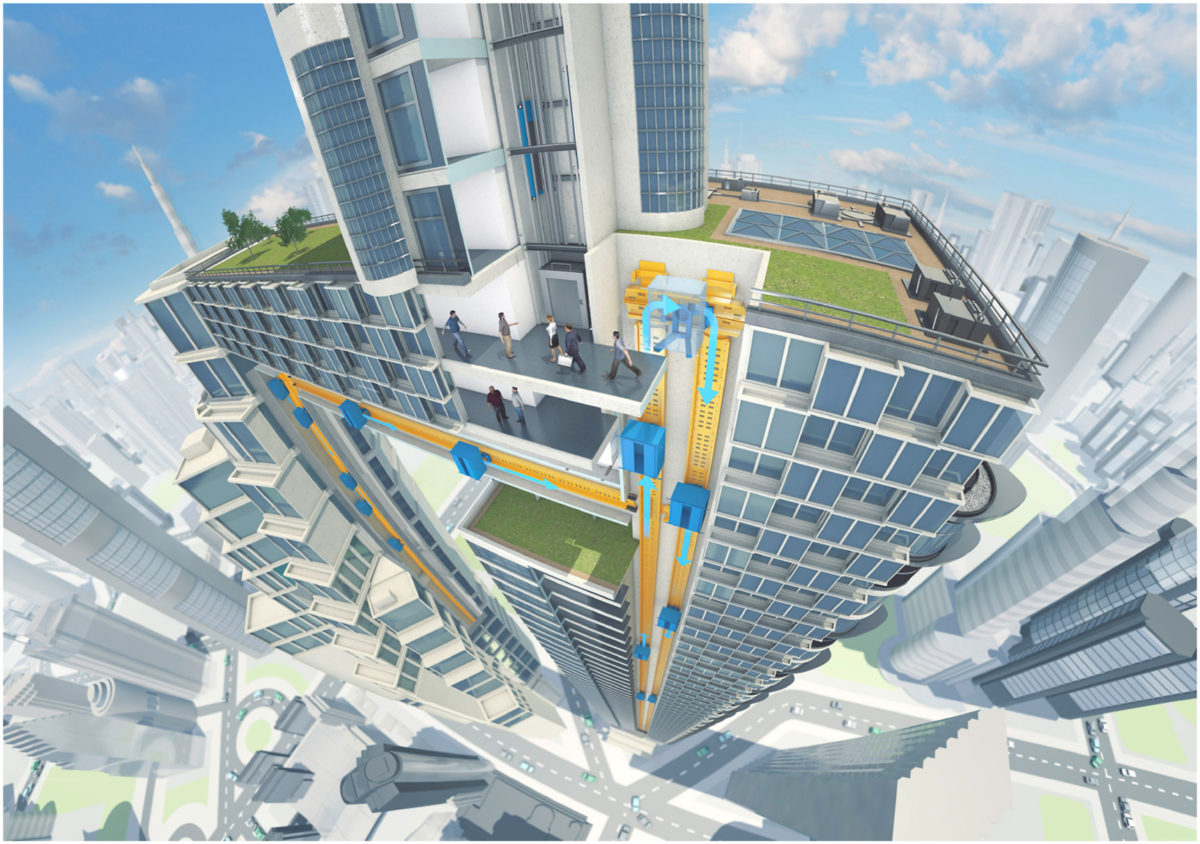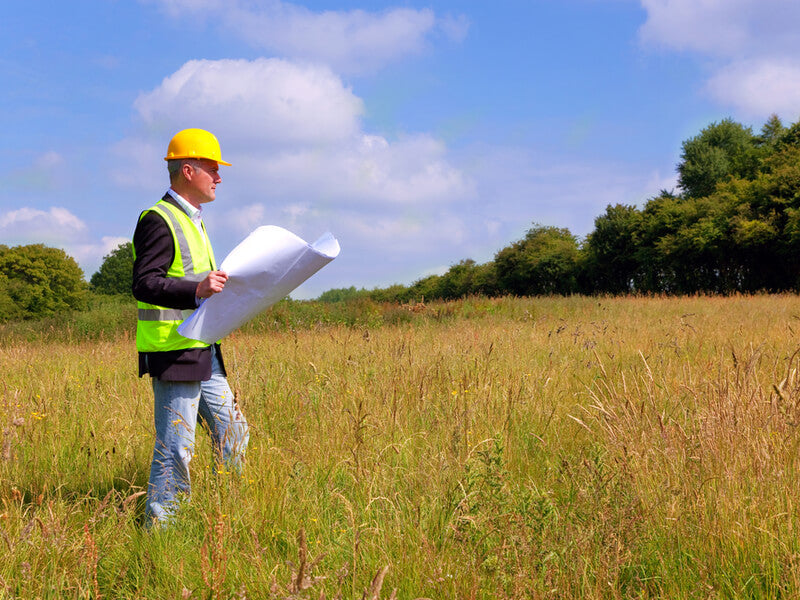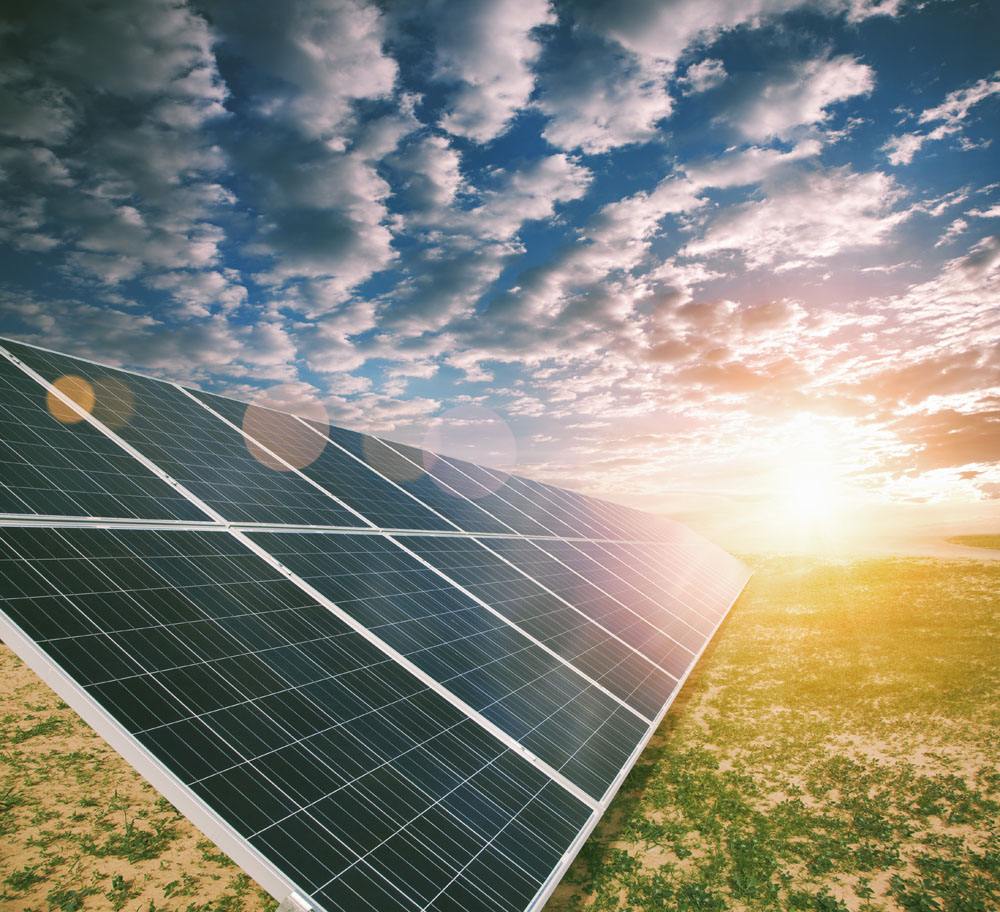https://www.pv-magazine.com/2022/05/05/storing-renewables-with-high-rise-buildings-lifts/
Storing renewables with high-rise elevators

Image: Federal University of Espírito Santo, Energy, Creative Commons License CC BY 4.0
An international research team has developed a gravitational energy storage technology for weekly cycles in high-rise buildings in urban environments.
Lift Energy Storage Technology (LEST) is a proposed long-term storage solution. It relies on the use of elevators in buildings to lift solid masses in charging mode. It lowers the same mass to produce electricity in discharge mode.
“Energy is stored as potential energy by elevating storage containers with an existing lift in the building from the lower storage site to the upper storage site,” the scientists said. “Electricity is then generated by lowering the storage containers from the upper to the lower storage site.”
The proposed system could detect the position of containers and optimize available storage capacity in the upper and lower storage sites through dedicated software. Building owners could choose to only operate the system during periods of low elevator demand, in order to minimize its impact on building occupants. The elevators can run at different speeds, depending on storage requirements.
“When the lifts are not being used, such as during the night, the autonomous trailers can fill the lift with containers and the lift can be used to provide ancillary services to the power grid by lifting and descending the mass continuously on grid requirements,” the academics said.

Image: Federal University of Espírito Santo, Energy, Creative Commons License CC BY 4.0
The economic viability of the system depends on the cost of the storage space. If this is low, the scientists said that a mixture of sand and water could be a feasible solution. The number of storage containers depends on a building's ceiling-bearing capacity.
The researchers assumed that the elevators have regenerative braking capabilities and that the cost of renting the containers' storage space in the upper and lower sites would be zero.
“The only cost requirements are the containers, the material selected to increase the mass of the containers, and the autonomous trailers,” they said.
Considering an average height difference between the upper and lower reservoirs of 100 meters, the cost of installed capacity energy storage cost was found to be approximately $62/kWh.
Popular content
“The cost of LEST with an average height difference of 300 meters is $21/kWh, whereas an average height difference of 50 meters costs $128/kWh. This is half of the cost of storing energy with batteries.”
The technical lifetime of the system is estimated between 20 and 30 years and its capacity will be strictly dependent on the number of existing lifts.
“The higher the height difference between the lower and upper storage sites, the lower the cost of the project,” the research team said.
The noted a multi-elevator lift developed by German industrial conglomerate Thyssenkrupp that only uses magnetic force to move the lifts, as an ideal solution for the LEST system.
“This allows the lift to move vertically, horizontally and diagonally, and it is particularly interesting for high-rise buildings because several lifts can travel up or down at the same time in the same shaft,” they said.
The scientists presented the gravitational tech in “Lift Energy Storage Technology: A solution for decentralized urban energy storage,” which was recently published in Energy. The research team includes academics from Austria's International Institute for Applied Systems Analysis (IIASA), the Federal University of Espírito Santo in Brazil, the Wrocław University of Science and Technology in Poland, and the Hamburg University of Applied Sciences in Germany.
“LEST systems are particularly interesting in buildings with rope-free elevators, and they can also provide tuned mass damper services on the top of very high buildings,” they said. “LEST systems are particularly interesting during the night when most lifts are not being used, as the autonomous trailers can continue to fill the lifts with containers to provide ancillary services to the power grid.”
This content is protected by copyright and may not be reused. If you want to cooperate with us and would like to reuse some of our content, please contact: editors@pv-magazine.com.




